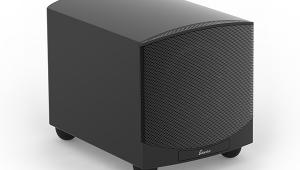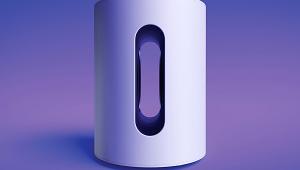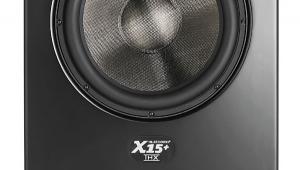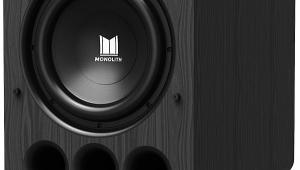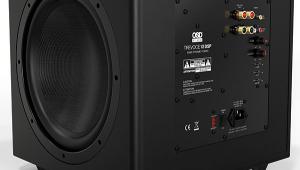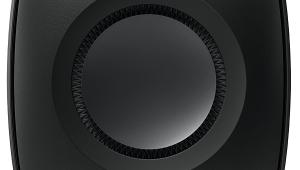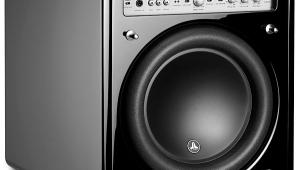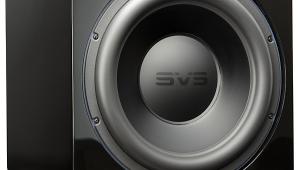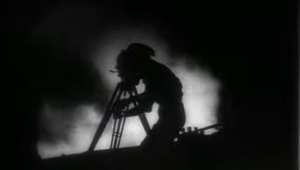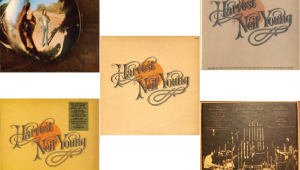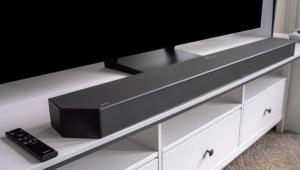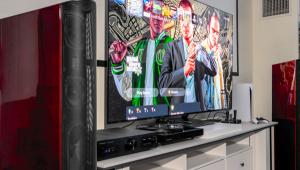It's always exciting to see established brands like Klipsch continue to innovate. | mud and tape
Klipsch RP-1600SW 16" Ported Subwoofer Review
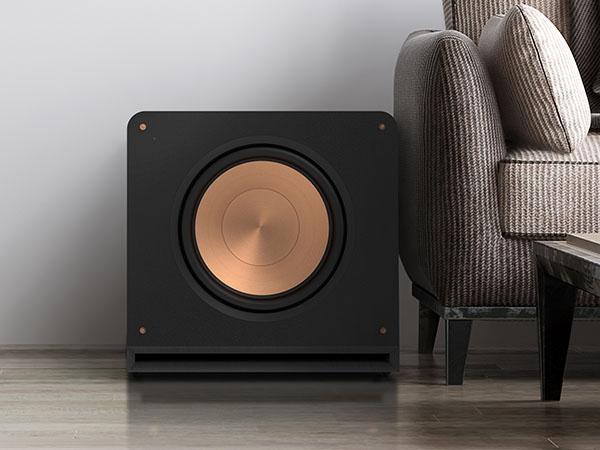
AT A GLANCE
Plus
5 year bumper-to-bumper warranty
Incredible amount of clean output
Excellent dynamics
Minus
No XLR inputs
No app control
Few adjustments
THE VERDICT
In the past Klipsch was known primarily for its speakers, but that might be changing. The Reference Premier line of subwoofers are very impressive, finally able to keep pace with their speakers. I went into this review not expecting much, I came away admiring what they had created. The Klipsch RP-1600SW is for real.
Say the name Klipsch and most people will instantly think about high-efficiency speakers, ones with horn tweeters and distinctive gold metallic midranges and woofers. If you're of a certain age your mind might take you to their groundbreaking Klipschorn, that marvelous horn-loaded behemoth of a loudspeaker. Over 75 years after its introduction, the Klipschorn is revered by audiophiles. I'm not sure anything like it exists even today. I'm not reviewing something from their speaker line though, what I have in my living room is a subwoofer from their Reference Premier series: the RP-1600SW.
The RP-1600SW is the top model in Klipsch's premium subwoofer line. It features a 16" driver with a front slot port they've dubbed the Aerofoil. Klipsch designed it with flares at both ends, the goal being to minimize annoying port noise. You know for sure I'm going to put that to the test.

A pair of RP-1600SW subs at Audio Advice Live 2023 - Photo by Mark Henninger
Impressions
“Bulldog” was my first impression when I freed the RP-1600SW from its foam shipping cocoon, which was an incredible 2.75” thick in sections. As a breed bulldogs tend to be short and muscular, wide and low to the ground. That’s exactly like the RP-1600SW, with the grill on you’d probably never think this subwoofer has a 16” driver. While it isn’t really very wide or tall it does have some depth, more than 2 feet worth. Not necessarily a bad thing however, in order for a subwoofer to be efficient you need a large cabinet. Going the ‘size matters’ route means Klipsch engineers were able to rely more upon acoustic principles and less on digital mechanisms — like DSP, or Digital Signal Processing — to tailor the output. They leveraged physics to achieve a lot of their response goals. Personally I prefer that, I would rather minimize the influence of bits and bytes when it comes to what my ears hear.
While moving the RP-1600SW into my HT system I couldn’t help but notice how heavy it was, at 111 pounds this is no featherweight. Odd as it might sound, I like that too. If I’m spending about $1,800 on a subwoofer I want to feel as though I bought something substantial. Bring a friend when you take delivery of yours.

With as much cabinet real estate as the RP-1600SW has you want a finish that’s easy on the eyes, thankfully the scratch resistant ebony vinyl veneer looks the part. Rounded corners on the top panel soften the appearance, giving it a more refined look. It’s constructed from 3/4” MDF all around, except for the front baffle which is double that at 1 1/2” thick. The grill follows that design ethos; 3/4” around the outside, 1 1/2” in the center. Inside the enclosure there is a pair of window braces, one of which is used to support the magnet on the driver. On the bottom are distinctive oblong plastic feet with rubber inserts, akin to little shock absorbers designed to diminish vibrations from being transmitted to the floor. The grill is held on by gold metal pins protruding from the front panel which couple to rubber cups in the grill frame. Speaking of gold metal…
It wouldn’t be a Klipsch product without a gold Cerametallic (ceramic metal) driver. Like a horn tweeter, it’s a bit of a signature for the company. Klipsch’s Cerametallic woofers exhibit a very high stiffness-to-mass ratio and superb damping, resulting in a powerful, solid bass foundation. According to the company "We’ve spent nearly three years engineering the Reference Premiere Subwoofer line". Typically a subwoofer drivers surround is a “half roll” design, similar to what the cross section of circle would look like if you cut it in half. On the RP-1600SW it’s more of the ‘high excursion’ variety, where the surround is taller than it is wide. That typically results in greater linear travel.
The class D amp is rated at 800 watts RMS, 1600 watts peak. It has RCA (unbalanced) inputs only, there is no XLR (balanced) input. There is a WA2 wireless port if you want to cut the cord, so to speak. That can be used in conjunction with the wired inputs, so a single RP-1600SW can work with multiple systems. Controls are pretty basic; there are dials for Gain and Low Pass, a toggle switch for Phase (0° and 180°) and another toggle for Power (on, off, auto). While the amp plate covers roughly 1/3rd of the back panel, the heat fin is only about the size of two decks of playing cards stacked on top of each other.
Small detail alert… recently I’ve taken to highlighting seemingly trivial features that differentiate one subwoofer from another. In a world of outwardly indistinguishable products, the quest to identify unique characteristics has become increasingly more important for me. In the case of the RP-1600SW it’s the amplifiers adjustment knobs for Gain and Low Pass.

The dials Klipsch uses are sizable, which isn’t terribly original. They do have a white background with black markings that are oriented perpendicular to the cabinet, that’s a break from the conventional. The biggest differentiator though is the magnifying lens mounted perpendicular to the cabinet which is used to highlight the current setting. I’m not aware of any other manufacturer with a similar setup. After using it for awhile I really like what Klipsch did, this layout enables you to simply glance over the back of the cabinet and easily know what the settings are. No more fumbling around to see what your configuration is. The large dials, high contrast colors and magnifier make it a breeze, beneficial given there’s no app control. The only thing I’d add is illumination to the lens itself, that way you wouldn’t even need a flashlight to make changes when your room is dark.
Listening/In Use
Because of my schedule at the time the Klipsch RP-1600SW was being evaluated, it ended up in rotation longer than I typically have a review unit (in this case, about 2 months). Ultimately I didn’t regret that one bit, which is probably more than I want to reveal at this point. Let’s swerve back in the other direction before I get too far off course.
I found that auto on/standby can be a bit fussy. It would go silent while watching some sports programming, like car or motorcycle events. That’s a big no-no for me as I watch a lot of that. There were times I would mute commercials and it would go to sleep within say 60 seconds, yet other times it would last up to 10 minutes. I never quite figured out a pattern. The RP-1600SW woke up pretty quickly so it wasn’t really a big deal, but ultimately I would rather it didn’t go comatose without a discernible trigger that I could work around. What I really liked however was something you probably won’t see referenced in too many other articles, just how good the Klipsch RP-1600SW sounded at low volume. Yes, I said low volume.
I’m probably not like most people who evaluate audio equipment, I don’t frequently listen at an ear-bleeding level. If I have a bad day at work — or I feel like getting rowdy — then I have no problem cranking it up, but that’s more the exception as opposed to the rule. For me it’s critically important a subwoofer doesn’t fade into obscurity when the volume is restrained, that it still makes itself known when used in moderation. Some people are probably shaking their head after reading that, considering it tantamount to heresy, but years of experience have taught me if a sub sounds good when it’s loafing about than it almost certainly sounds good when pushed.
So how did the Klipsch RP-1600SW do? It has very good presence at low volume; rich, clear and well defined. It proved so agile that I added a “house curve” after it was tuned, something I rarely do. This gave some additional kick down low, without sacrificing the clarity I so desperately seek. But now, after all that talk about running the RP-1600SW in a subdued manner, let me jump right into how it performed doing the exact opposite. Hey, I can’t show restraint all the time you know.
Movies
Of late, I’ve been testing every subwoofer using the opening sequence from Edge of Tomorrow. If you’re reading this you know why. My modus operandi is to start at a reasonable volume, run through that scene and see how it goes. If I don’t hear anything too concerning I add a few dB and repeat the process. I continue that pattern until the subwoofer taps out. Trouble is, the Klipsch RP-1600SW never tapped out. I got all the way to 0dB — often called reference level — and yet it didn’t give up. It did gracefully bow out however, but in this context that’s a good thing.
There are 5 different plateaus to the effect in this scene that unsettle a subwoofer, each gets progressively louder and deeper. It got so intense toward the end a piece of paper on the coffee table 10 feet from the sub was blown onto the floor from the wind coming out of the front port, yet not a single unpleasant sound was heard. As I inched closer to 0dB I did notice it wasn’t getting any louder, suggesting the limiters Klipsch programmed had kicking in and were dialing things back. No matter how far I went, nothing undesirable reared its ugly head. I was quite impressed by the outcome, that amount of equanimity isn’t easy for a ported subwoofer.
Similar to the opening scene from Edge of Tomorrow, Master and Commander starts things off with a subwoofer challenge. In this case it’s a vicious battle between two warships, at almost point blank range for a portion of their conflict.
The British frigate H.M.S. Surprise sails through the fog, looking for the French privateer vessel Acheron. Suddenly, the commander of the Surprise sees the muzzle flash from the Acherons canons and shouts “all hands down!”. At that point the battle explodes, quite literally. As the ships take turns trying to blast the other into oblivion, the Klipsch RP-1600SW came alive. Each shock wave from the Acherons cannons created a floor-rumbling sensation, skillfully depicting not only power but relative distance. As they pummeled the Surprise the intensity brought the action front and center, creating the necessary scale to make the battle fully engaging.
With Open Range you have to go further into the movie than you do with the previous two — scene 13 to be precise — in order to get to the part I wanted to use. Here is where the “free grazers”, people who herd their cattle across unclaimed land, come face-to-face with Denton Baxter and his posse of henchmen. Baxter is the local land baron who hates free grazers and he wants to chase them off. If necessary, he will use violence to do so.
This scene is known for exaggerated gun sounds, exactly why I choose it. As the two sides unload on each other the guns were, well, exaggerated. But in a good way, and the RP-1600SW ate it up. Despite the embellished nature of the effects, each was distinct and easily identifiable. In particular the “scattergun” (shotgun), that one hit with considerable authority. Oddly, it didn’t seem overdone when rendered by the RP-1660SW. Potent for sure, but not excessive.
I then jumped to Hurt Locker for more gunfire, focusing primarily on scene 8. This is the standoff in the desert, which pits the US Army and some British contractors against the enemy. Here the good guys get pinned down by the bad guys and their sniper. The opening of this scene sets the stage, with portions of the soundtrack creating a deep pulsating sensation. With some subwoofers that effect can drone and get annoying, but no such problem here. Instantly I knew the RP-1600SW was ready to go, which meant so too was I. Excuse me while I grab the remote and up the volume a bit more.
Mortars hit with a explosive (sorry) thud. Each time they popped off a round on the Humvee-mounted 50 caliber machine gun the subwoofers port sent a blast of air washing across my living room. The driver did its part too, contributing a formidable wallop of bass. The contractors pull out a Barrett M107 sniper rifle, each time he pulled that trigger there was a percussive kick.
Perhaps the most impressive aspect of all the movie tests was the RP-1600SW’s dynamic range, the balance between various effects in a scene was excellent. Even during congested parts of a soundtrack, with a lot of things going on, the Klipsch never faltered. Every layer remained intact and clear.
After running through all the scenes I checked the amp for warmth, but found less than anticipated. I say “less than anticipated” only because there isn’t much surface area on the fins to dissipate it, but in spite of that there wasn't much heat being generated. The benefit of a class D amp and a large cabinet I suppose. Efficiency at work.
Music
When Paul Klipsch started designing speakers there was no such thing as home theater, his products were only used for music. There were no subwoofers during the 1940’s either. Given the stellar results of the movie tests, I’m hoping Klipsch remained true to the spirit of their founder and ensured their Reference Premier subwoofers are capable of accurate music reproduction. This will be the litmus test for me.
First up was Stevie Wonder’s “Higher Ground”. While most people know me as an aficionado of metal, a lover of aggressive music, I do appreciate other genres. One is music from the 60’s and 70’s, mostly because I grew up listening to it. It hearkens back to my youth, and who doesn’t like remembering when they were young? “Higher Ground” has a funky beat, with a head-bopping lick, so why not?
The Klipsch RP-1600SW took me on a trip down memory lane, but with much better bass than any stereo system I had back in the day. The rhythm was crisp and detailed, the flow spot on. I could crank it as loud as I dared, the RP-1600SW remained unfazed and sublime.
Still feeling a bit nostalgic I jumped to one of my origin songs, “Nowhere Man” from the Beatles. Although released several years before my youthful ears ever heard it, I distinctly recall the first time this one leapt out of the radio and into my psyche. I begged my parents to buy the 45 for me, anyone old enough to remember those? To this day I feel Paul McCartney’s Hofner hollow body is the best sounding bass guitar there ever was. A Rickenbacker is a close second for me, but that Hofner will always be my favorite. Thankfully when “Nowhere Man” started playing the RP-1600SW didn’t let me down, it produced a lavish and weighty sound that underpinned this song magnificently. Its sumptuous tone was oozing out of the sub.
How about I segue out of sentimental mode and go in a totally different direction? Are you ready for some electronic music instead? This is not in my wheelhouse, but I know someone who does speak the language. None other than Sound & Vision editor, Mark Henninger. I’ve know Mark for the better part of a decade, what most people aren’t aware of is his other interests. One of them being electronic music, specifically arrangements he’s created that have very deep bass. I’ve used some of his material in the past and it has proven to challenge many a subwoofer. Given that I haven’t really pushed the RP-1600SW thus far with the songs I’ve chosen, it seemed time to rectify that. I went with one titled “Dead Serious”. As its name implies, now was a time of reckoning.
Whatever Mark included in this mix, it was pretty brutal. I’m standing at least 25 feet away from the RP-1600SW, in another room I might add, and yet I can feel it pounding away. There are passages of this song that send pulsating waves of bass at the listener, yet the RP-1600SW didn’t care in the least. I bumped the volume — rather considerably I might add — yet it kept right on going. It was not fazed in the least.
Conclusion
If I’m honest, there was a time when I wouldn’t consider recommending a Klipsch subwoofer to anyone. That time is no more, the RP-1600SW surprised me; it can play very loud without losing composer, has impressive dynamics, it’s almost impossible to trip up this thing. The protection mechanisms are all but bulletproof, you can experiment with impunity. Even at the limit it sounds totally in control, composed despite your best efforts to force it not to be.
Bass was always sharp and distinct, each note and effect clearly defined. There was no overhang, nothing sounded out of place. When it wasn’t necessary to do anything the RP-1600SW didn’t, when it was time to get serious it could and did. The Klipsch Reference Premier line of subwoofers is definitely worth adding to your short list.

Specs
Woofer: 16" Ultra Long Throw Cerametallic
Frequency Response: 14.5-175Hz +/- 3dB
Amplifier Type: Class D
Amplifier Power: 800W RMS / 1600W Peak
Maximum Output: 125.5 dB
Enclosure Type: Bass Reflex, Front-Firing Aerofoil Slot Port
Dimensions: 23.4"x23.5"x27.4" (HWD)
Weight: 111 lbs
Test Bench

- Log in or register to post comments


I have used this product before. I am very satisfied using basketball stars this product. It should be widely known.

It's always exciting to see established brands continuing to innovate, such as Klipsch.

Is there any particular link to the "Dead Serious" song you used? I've searched for it without any success.

That was so nice, Thanks for sharing this one. Concrete forming boards



